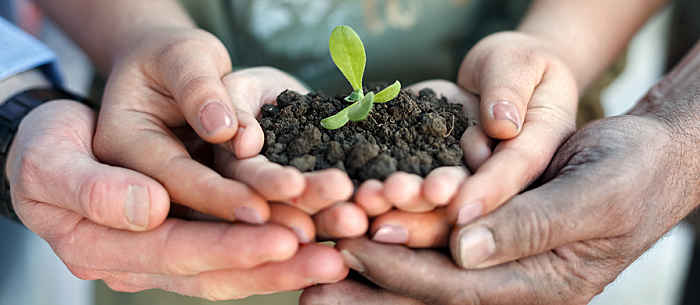Sometimes you just need to play in the dirt! Don’t worry, you’ll get more out of it than dirty laundry. When you grow a family garden, kids learn where food comes from while enjoying fresh air and the outdoors. And your whole family will get to enjoy eating food that you grew yourselves.
What Are the Benefits of a Family Garden?
Teaching kids how to plant a garden is a great life-time skill for them to have. It will also bring your family closer together and open healthy conversations about the earth. If we start teaching children at an early age where their food comes from and what it looks like in the ground and not dried up in a box, they will learn to appreciate the earth. Children learn the true connectedness from earth to table and they learn to nurture, have patience, be mindful and see rewards.
The health benefits are almost too numerous to mention. By using natural and organic composts and amendments, the produce is filled with vital minerals and nutrients. Studies have shown that plants will use up their own stores to stay alive once they are picked. So each day that goes by between harvest and dinner table reduces the goodness of vegetables and fruits. How awesome it is to be able to pick lettuce, beans, Swiss chard, broccoli, cucumbers or summer squash and bring it right inside to the kitchen! All of the benefits go right to the family.
What Should You Grow?
There may be some tropical plants that only do well in hot climates, like mangoes or pineapples, but most vegetables do well in mostly any climate as long as they’re planted at the right time. For the youngest gardeners, we encourage growing plants that will have big and bright features or really tasty fruits and that are fairly easy to grow with a high success rate.
Here’s a list of things that might be good to start with:
- tomatoes
- peppers
- peas
- broccoli
- kale
- lettuce (or mesclun mix, which is gorgeous!)
- rainbow Swiss chard
- radish
- carrots
- beets
- potatoes
- cucumbers
- summer squash
- zucchini
- cabbage
- herbs (basil, parsley, dill, chives)
- flowers (like nasturtium, sunflowers, zinnia and marigolds)
How Can the Kids Help?
Kids love to get in the dirt, especially when they feel like they have an important job to do. Kids will feel a sense of accomplishment when the first buds come out of the ground. If you are building a raised bed, they can help lay out the design so they feel included from the beginning. Start with vegetables that germinate quicker, like beans, potatoes and corn, or buy organic starter plants kids can watch grow daily.
And there’s no shortage of ways kids can help out. They can transport compost from the bin to the bed with an appropriate wheelbarrow. They can help dig amendments like kelp or alfalfa meal into the soil with a garden fork. They can rake leaves in the fall. And most kids love to water plants with a watering can.
Try these tricks to get kids to do garden work.
What About When Things Go Wrong?
Even the most seasoned gardener can have problems. What happens when the cucumbers don’t grow or insects attack the tomatoes? Your kids might be upset to see all their hard work not pay off, but take a deep breath and explain to them that sometimes seeds fail to grow, and involve them in the plan for remedying the problem. Try and figure out with your young gardeners why specific things didn’t grow and make a different plant for next year.
Start small. Grow the things that you like to eat best. Ask experienced gardeners for advice. And, whatever you can’t grow, buy from your local farmer.

